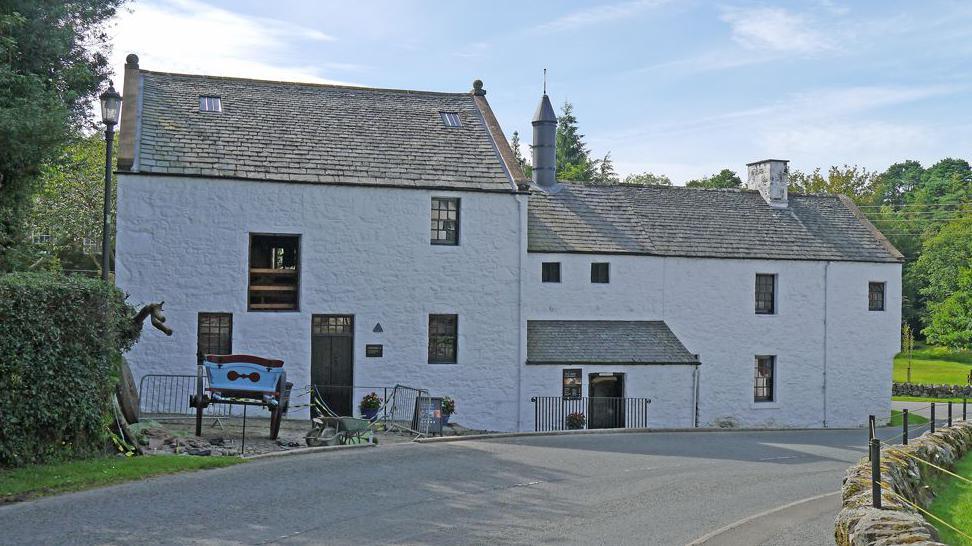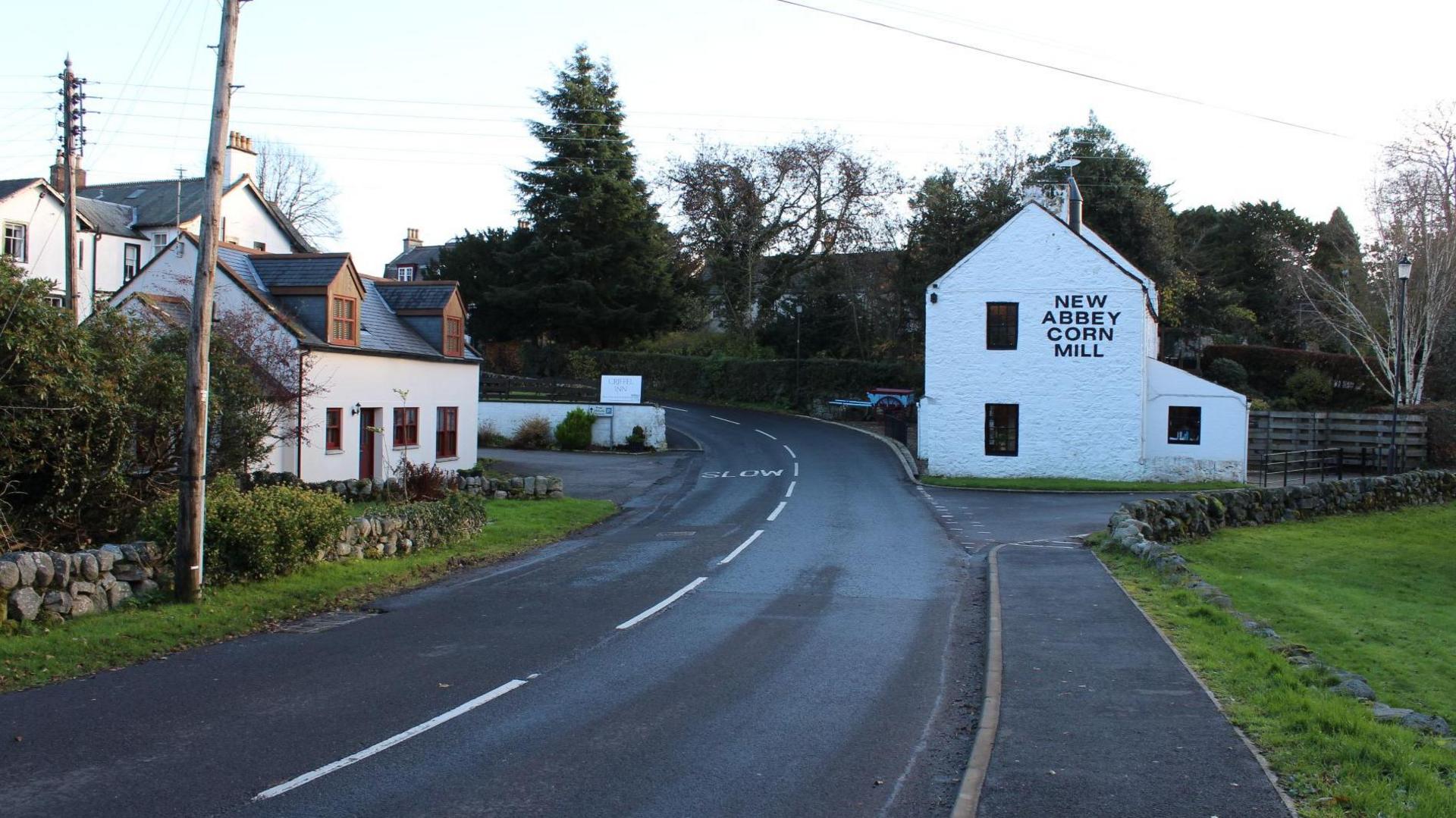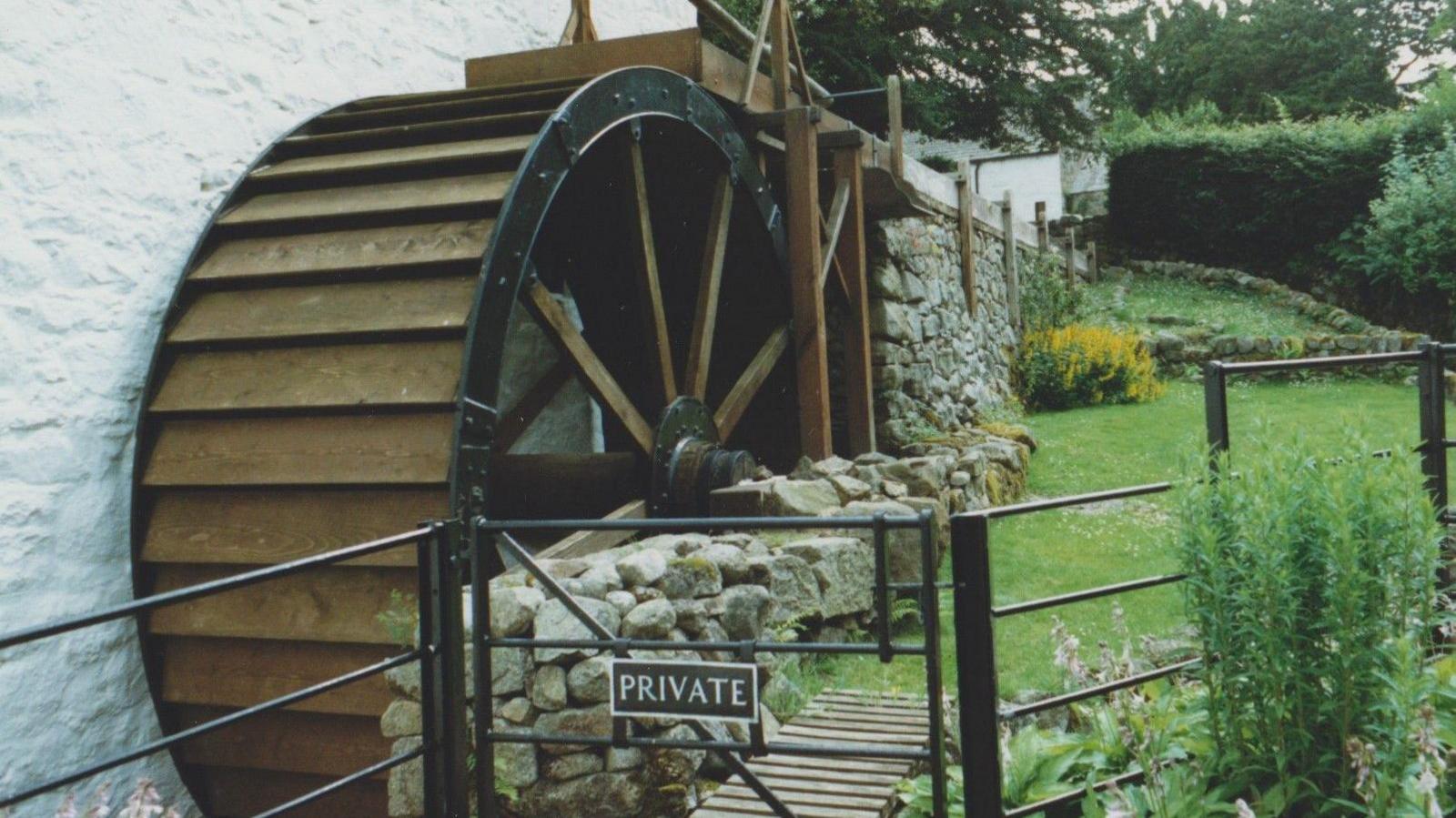Historic corn mill lorry protection action refused

New Abbey Corn Mill is a category A-listed building near Dumfries
- Published
Plans to resolve long-running safety concerns over lorries passing near a historic corn mill in southern Scotland have been refused.
Historic Environment Scotland (HES) wanted to put boulders along the boundary of the site at New Abbey, near Dumfries.
HES said the work was necessary to stop lorries potentially leaving the road and ending up in the category A-listed mill's gardens.
The plans were being recommended for approval but Dumfries and Galloway Council's planning committee turned them down.

The building stands at the entrance to the village
A first bid for protective work was lodged in December 2016 but was subsequently rejected by Dumfries and Galloway Council.
Revised plans have now also been refused.
A report said the corn mill was a site of national importance which had faced "historic challenges" with the movement of heavy goods vehicles to a nearby sawmill.
In order to tackle the situation a concrete kerb and granite boulders would have been put in place.
The local community council has said it believed the situation should have been resolved some time ago as there was an "obvious safety issue".
Opponents have argued the plans do not tackle the root cause of the problem and would have an adverse impact on a conservation area.
Sawmill operators James Kingan and Sons have supported the move saying that while it was not a "perfect solution" it was the "only viable option" to protect the corn mill boundary in the short-term.
A council report, external has concluded that "on balance" the plans should be approved but the committee decided they should not proceed.
What is the building's history?

The last miller stopped the waterwheel at New Abbey soon after World War Two
The whitewashed stone mill by the Pow Burn in New Abbey was built at the end of the 1700s.
But a mill may have been there as early as the late 1200s when Sweetheart Abbey was founded in the village.
Originally two storeys high with two millstones, the mill grew in the 1800s as an extra floor and millstone were added.
Despite its name, the site was used mainly to mill oats - both for human consumption and for animal feed
Thomas Millar was the first recorded miller, in 1825. The last miller, John Clingan, closed his ledgers and stopped the waterwheel soon after World War Two.
The building is now run as a visitor attraction.
Source: Historic Environment Scotland
Get in touch
What stories would you like BBC News to cover from the south of Scotland?